From prevention to emergency intervention, our (un)healthy journey to India
Our family of 5 is comprised of three kids ages 9, 13 and 15, and two seasoned traveler adults. Home is in the Washington, DC area and we recently traveled to explore India, the country where my husband grew up.
Our health stats:
- 2 weeks in India
- 5 cities visited: Delhi, Agra, Jaipur, Goa and Mumbai
- 3 trips to a pharmacy
- 0 cases of “Delhi Belly”
- Dozens of mosquito bites (but no malaria!)
- Multiple doses of albuterol (for asthma)
- 1 EpiPen administered (for food allergy reaction)
All in all, I think we did pretty well, though looking at the stats, we definitely could have done better.
About six weeks before the trip we visited our local Arlington Travel Clinic to consult on recommended vaccines and malaria prophylaxis. We’d been there before our trips to Nicaragua and Uganda and love that we have a travel clinic just minutes from home! We dutifully got our typhoid shots/pills. (Three of us took the shot, it lasts three years, whereas the pills only last two. But despite the OBVIOUS $$ savings, two of the kids who HATE needles opted for the pills.)
I counted EpiPens (emergency auto-injectors for epinephrine, a stimulant used to stop an allergic reaction) and packed the asthma inhaler, extra Benadryl, our malaria pills and some diarrhea meds, just in case. My every-day purse has a stash of Advil and Sudafed. We left feeling pretty well prepared for our two weeks of adventure in India.

That was, until day three when the pollution took away my voice and I couldn’t stop coughing. It was: THAT. BAD.
I talked a bit about the pharmacies in India in another post about retail in India. What I found frustrating/interesting is that I couldn’t replenish my pseudoephedrine (Sudafed) supply. India banned it a few years ago. I tried the pharmacists’ alternative and it made me feel sick. And the cough medicine I bought was HORRIBLE. I mean, they don’t use all the fake sweeteners and food dyes that we do in America. It tasted like medicine 😦 Luckily I am a big girl and could deal; but it took me a week of terrible coughing before I thought to use my son’s Albuterol inhaler, and it was magic. I am sure that if it had been one of my kids coughing like I was, I would have had them on an inhaler in no time. (Of course, part of our prep for the trip was to have my son on inhaled steroids to help protect him from the poor air quality, so he did fine!)
To summarize: pollution = bad. Albuterol = good.
It really was my food-allergic/asthmatic son that we worried the most about while envisioning the trip to India. Our travel experience previously taught us that it was good practice to bring safe foods, understand cultural barriers regarding food and food prep, and be prepared. Thanks to his pre-trip regimen of steroids, he only needed a few puffs of Albuterol the whole trip, which was awesome.

And we did ok with food allergy prevention/mitigation too. The first week was harder than the second since we were in hotels and had to eat in restaurants for every meal. He had to eat a few packaged things here and there when we just didn’t feel comfortable with the restaurant or airline, particularly on Emirates Airlines and while dining at the Raddison Blu in Agra.
Emirates, surprisingly, told me “oh, if you have a nut allergy you need to bring your own food.” Now, had I been a good mom and called them AHEAD of time, it would have been better. I think my experienced traveler status had me super comfortable that I could figure things out on the fly. And I could – we had a backpack full of packaged junk food, like pop tarts, cookies, crackers and granola bites. So when I realized – at 40,000 feet above the Atlantic – that Emirates doesn’t provide anything more than a banana that is safe for nut allergies, my son didn’t have to go hungry. Now, this isn’t meant to malign the airline, I didn’t call ahead. But, as someone who eats gluten-free (intolerance, not a severe allergy) I was impressed that I could select a GF meal (among a LONG list of other meal preferences) but none of course were nut-free.

In India, nuts. are. everywhere. We knew this, and it was honestly the biggest reason we hadn’t traveled to India sooner. At least by waiting until my son was 9, he had outgrown his egg and dairy allergies, which makes traveling SO MUCH EASIER. But our experience demonstrates that knowledge and preparedness is not a solution for absolute attentiveness. Unfortunately for my son, we learned the hard way that having too many people watching out for his well being actually created more confusion and less protection.
After twelve days in India, he ate a small bite of chicken that had (we later learned) been marinated in a yogurt and cashew mixture. Cue allergic reaction and his request for an EpiPen.
[Pause, because writing this still gives me chills.]
We were literally next door to the local hospital in Mumbai, and sitting with a cousin who is an M.D., so we were covered in case he had a rebound reaction. Luckily he recovered quickly and was able to enjoy the rest of his day. This was his third serious allergic reaction in his life, and the first where he seemed in control and calm. Afterwards, he was almost amazed that he ate something that he was allergic to and was calm with getting the EpiPen. I am still queasy just thinking about it – his having an allergic reaction while traveling abroad has always been our nightmare and was a significant reason why we didn’t do more traveling while he was younger. And here we were, living our nightmare. We are quite aware that the situation could have been far more serious, and know we got very lucky that he was fine.
Living with food allergies is tough; traveling while managing significant food allergies is even tougher. But despite the challenges, and frankly the risk, our family will continue to prioritize travel and exploration, and will apply the lessons learned in India to make future travel even safer. If I have any concluding advice for other families considering international travel with their food-allergic children, it is: trust yourself, travel heavy with food from home, and do enough research so that you have an action plan if your nightmare happens.


 I visited Chennai in the south of India in 1994 and again in 2000; and Mumbai in 2000 and again in 2002. At that time, we’d hear dire warnings about visiting Agra – it was a dangerous road from Delhi; two lanes, with steep ditches. You’d hear of buses overturning or car accidents at night. I have to admit, those tales of woe kept me from even wanting to visit Agra, and its famous landmark, the Taj Mahal. But now, there is a beautiful highway (a toll road) that runs between Delhi and Agra, making for an easy three hour journey. There are even rest stops akin to what we have in the United States (with Starbucks!)
I visited Chennai in the south of India in 1994 and again in 2000; and Mumbai in 2000 and again in 2002. At that time, we’d hear dire warnings about visiting Agra – it was a dangerous road from Delhi; two lanes, with steep ditches. You’d hear of buses overturning or car accidents at night. I have to admit, those tales of woe kept me from even wanting to visit Agra, and its famous landmark, the Taj Mahal. But now, there is a beautiful highway (a toll road) that runs between Delhi and Agra, making for an easy three hour journey. There are even rest stops akin to what we have in the United States (with Starbucks!) We arrived at our hotel mid-day, and the kids were beyond excited. The gorgeous lobby of the Radisson Blu felt luxurious and welcoming. The kids ordered hot chocolate and tea while we got checked in, and then groaned when we had to hustle to get moved into our rooms and leave right away for lunch and more tourist stuff. They really wanted to explore the hotel and go for a swim. The rooftop infinity pool was spectacular – but we wouldn’t see it until the next morning.
We arrived at our hotel mid-day, and the kids were beyond excited. The gorgeous lobby of the Radisson Blu felt luxurious and welcoming. The kids ordered hot chocolate and tea while we got checked in, and then groaned when we had to hustle to get moved into our rooms and leave right away for lunch and more tourist stuff. They really wanted to explore the hotel and go for a swim. The rooftop infinity pool was spectacular – but we wouldn’t see it until the next morning. After an overpriced and mostly disappointing lunch at a touristy restaurant, we went to the Agra Fort. I was especially excited to visit because we had to skip the Red Fort in Delhi the day before (which was built as a “new and improved” version of the Agra Fort by Mughals in the 1600s.) But Agra Fort is the famous one, the original if you will, and it was stunning. I found myself imagining life inside the walls, the various palaces teeming with people, children running around, large public gatherings on the vast lawns. Agra Fort was never attacked, but had been built with numerous defenses and partitioned with a large moat and a river.
After an overpriced and mostly disappointing lunch at a touristy restaurant, we went to the Agra Fort. I was especially excited to visit because we had to skip the Red Fort in Delhi the day before (which was built as a “new and improved” version of the Agra Fort by Mughals in the 1600s.) But Agra Fort is the famous one, the original if you will, and it was stunning. I found myself imagining life inside the walls, the various palaces teeming with people, children running around, large public gatherings on the vast lawns. Agra Fort was never attacked, but had been built with numerous defenses and partitioned with a large moat and a river.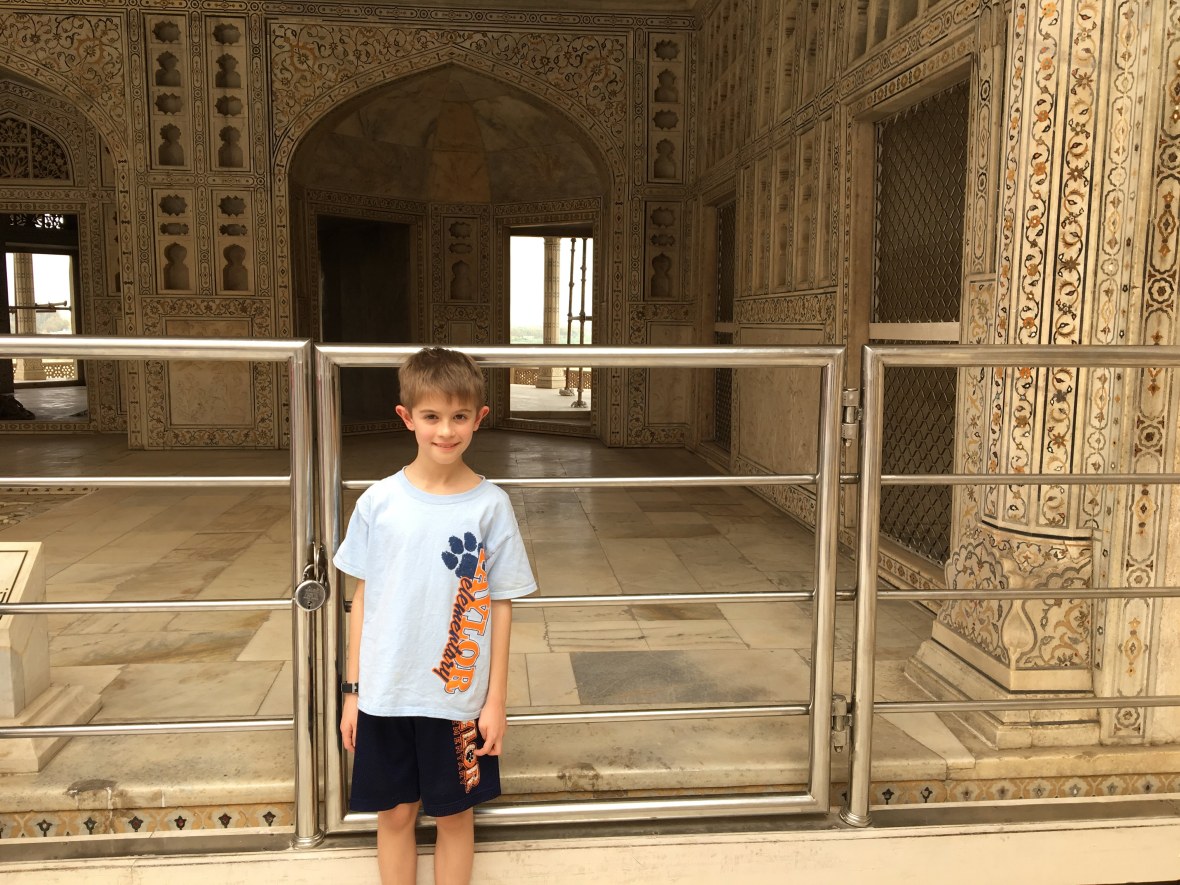 The Agra Fort offers a beautiful vantage point to the Taj Mahal, just across the river. My 9-year-old didn’t want to “spoil” the Taj Mahal reveal and was reluctant to look, but I promised him this was part of the glory. Fun fact: Shah Jahan, who built the Taj Mahal as an honor to his favorite wife, was condemned by his son to live out his final years under “house arrest” in his palace at the Agra Fort. His son was kind enough to allow him to live with stunning views of the Taj Mahal.
The Agra Fort offers a beautiful vantage point to the Taj Mahal, just across the river. My 9-year-old didn’t want to “spoil” the Taj Mahal reveal and was reluctant to look, but I promised him this was part of the glory. Fun fact: Shah Jahan, who built the Taj Mahal as an honor to his favorite wife, was condemned by his son to live out his final years under “house arrest” in his palace at the Agra Fort. His son was kind enough to allow him to live with stunning views of the Taj Mahal. To me, the impressive part of the Taj Mahal isn’t the love story attached to its origins; or the politics of the leader who built it. The magic is in the design, the craftsmanship, the materials and the fact that this building stands magnificently today but was built in 1630. Marble, perfectly chiseled in intricate detail, inlaid with stones and painted.
To me, the impressive part of the Taj Mahal isn’t the love story attached to its origins; or the politics of the leader who built it. The magic is in the design, the craftsmanship, the materials and the fact that this building stands magnificently today but was built in 1630. Marble, perfectly chiseled in intricate detail, inlaid with stones and painted.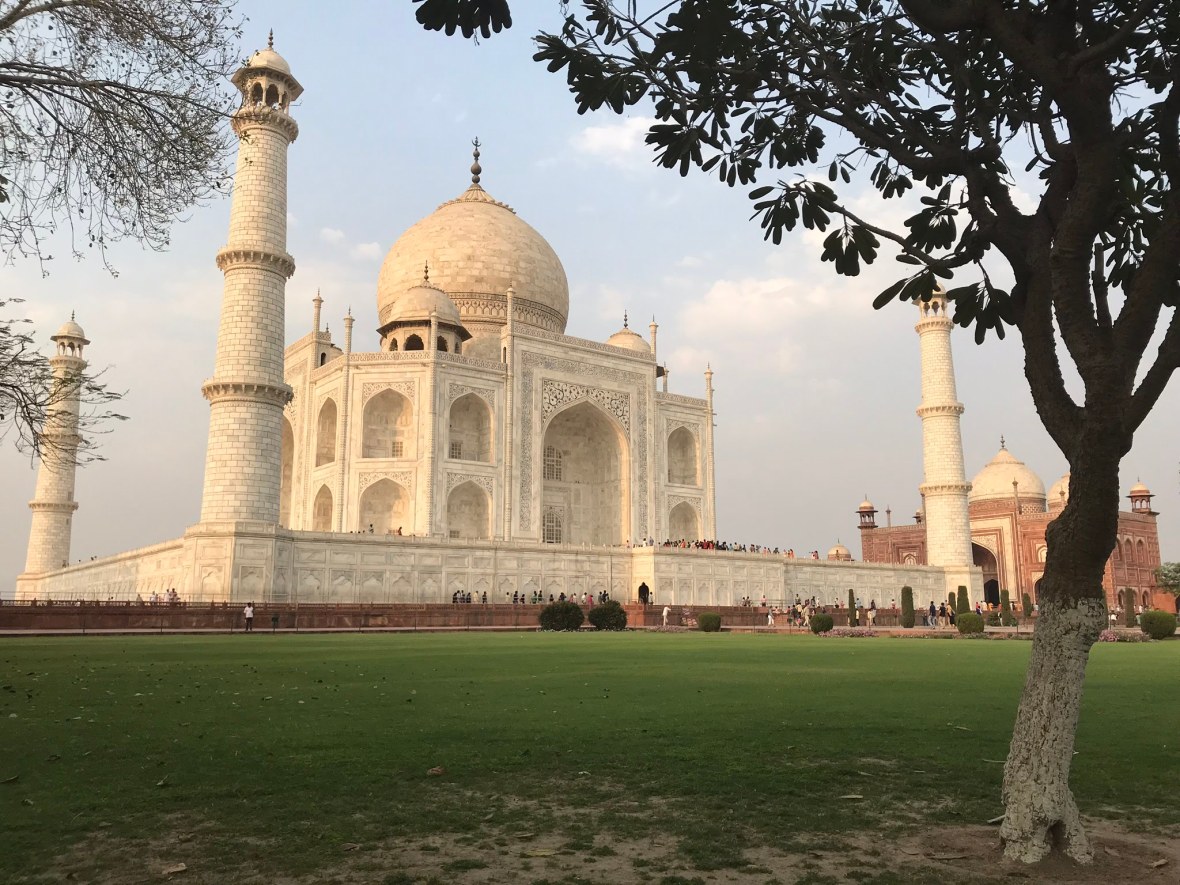 After sunset, we dragged our now exhausted selves back to the car, anticipating a swim at the “infinity rooftop pool overlooking the Taj Mahal.” Silly family – the kids ran off as soon as we got to the hotel, and we ended up sitting in the dark at the wrong pool (turns out we had missed that the infinity pool was on the roof, and when we found the kids near the 2nd floor pool we just stayed there, which was unpleasant: the water was freezing and I got a hundred mosquito bites. (Good think we were on malaria prophylaxis.)
After sunset, we dragged our now exhausted selves back to the car, anticipating a swim at the “infinity rooftop pool overlooking the Taj Mahal.” Silly family – the kids ran off as soon as we got to the hotel, and we ended up sitting in the dark at the wrong pool (turns out we had missed that the infinity pool was on the roof, and when we found the kids near the 2nd floor pool we just stayed there, which was unpleasant: the water was freezing and I got a hundred mosquito bites. (Good think we were on malaria prophylaxis.)




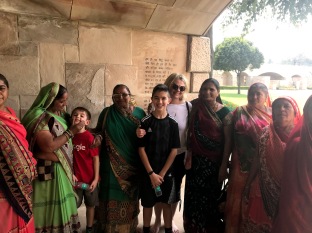


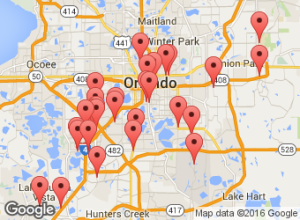


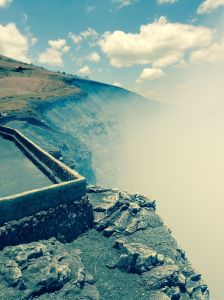






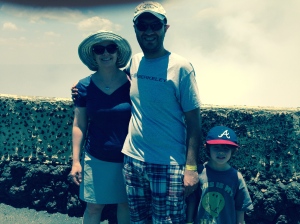

 The Ferry itself is unimpressive. Worn looking. Old. I did see life vests but didn’t bother assessing how many there were. The timing of our trip was days after the horrific ferry boat sinking in South Korea. For better or worse, we had been cut off from all news and didn’t learn of that tragedy until we returned home. I never felt unsafe on our ferry — except for the allergic reaction that our food allergic son had shortly after we departed. Luckily, the ride was just over an hour and provided stunning views of the volcanoes on Ometepe!
The Ferry itself is unimpressive. Worn looking. Old. I did see life vests but didn’t bother assessing how many there were. The timing of our trip was days after the horrific ferry boat sinking in South Korea. For better or worse, we had been cut off from all news and didn’t learn of that tragedy until we returned home. I never felt unsafe on our ferry — except for the allergic reaction that our food allergic son had shortly after we departed. Luckily, the ride was just over an hour and provided stunning views of the volcanoes on Ometepe! lined up and eager for business. We had to wait for the truckload of bananas to move onto the ferry before we could leave, ironically, the only glimpse of that fruit we would have for the 3 1/2 days on the island! Our rental property was an easy 10 minute drive away, and our driver luckily knew how to find it!
lined up and eager for business. We had to wait for the truckload of bananas to move onto the ferry before we could leave, ironically, the only glimpse of that fruit we would have for the 3 1/2 days on the island! Our rental property was an easy 10 minute drive away, and our driver luckily knew how to find it! The farm keeper and his family live on the property, and saw to our needs during the stay. My boys loved playing with his girls, and while Emerson’s English was limited, it far surpassed our Spanish, and he made sure that we found the path to the lake, and he arranged for fresh fish for us, which his wife prepared in a traditional grill with rice and beans and plantains! We picked many mangoes and limes, and Emerson gave us each a large avocado, which unfortunately didn’t ripen before our trip concluded and we had to forfeit our fruit.
The farm keeper and his family live on the property, and saw to our needs during the stay. My boys loved playing with his girls, and while Emerson’s English was limited, it far surpassed our Spanish, and he made sure that we found the path to the lake, and he arranged for fresh fish for us, which his wife prepared in a traditional grill with rice and beans and plantains! We picked many mangoes and limes, and Emerson gave us each a large avocado, which unfortunately didn’t ripen before our trip concluded and we had to forfeit our fruit. We had a slick brochure from the tourist office that made the Eco Reserve a top destination on Ometepe Island. But we were a tad disappointed. The nature walk was nice — we saw monkeys and some beautiful plants and birds. But we didn’t see anything inside the reserve that we hadn’t seen on our farm or in San Juan del Sur. It being located adjacent to an upscale hotel and restaurant was a fortuitous coincidence for us, as we enjoyed delicious Nica snacks, drinks and their beach. The boys rented a paddle boat, and enjoyed cooling off in the lake. We were so wiped out by the heat and all the walking that we had the hotel call us a private car to go back to the farm. Private transportation in Nicaragua is expensive, but we were too tired to walk the 1/2 mile back to the main road and wait for the bus.
We had a slick brochure from the tourist office that made the Eco Reserve a top destination on Ometepe Island. But we were a tad disappointed. The nature walk was nice — we saw monkeys and some beautiful plants and birds. But we didn’t see anything inside the reserve that we hadn’t seen on our farm or in San Juan del Sur. It being located adjacent to an upscale hotel and restaurant was a fortuitous coincidence for us, as we enjoyed delicious Nica snacks, drinks and their beach. The boys rented a paddle boat, and enjoyed cooling off in the lake. We were so wiped out by the heat and all the walking that we had the hotel call us a private car to go back to the farm. Private transportation in Nicaragua is expensive, but we were too tired to walk the 1/2 mile back to the main road and wait for the bus.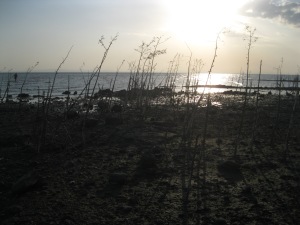 As we packed up to leave Ometepe on Monday morning, the grown ups were more cheerful about leaving the island — for various reasons. We wanted fresh fruit and veggies, I wanted to be closer to transportation and feel like we could access modern medicine should there be an issue, and we craved air conditioning. I realized how soft I had become in how much the heat bothered me. The kids never complained. Even my mom was more comfortable on the farm than my husband and I (she had grown up spending summers on her grandfather’s farm in Canada.)
As we packed up to leave Ometepe on Monday morning, the grown ups were more cheerful about leaving the island — for various reasons. We wanted fresh fruit and veggies, I wanted to be closer to transportation and feel like we could access modern medicine should there be an issue, and we craved air conditioning. I realized how soft I had become in how much the heat bothered me. The kids never complained. Even my mom was more comfortable on the farm than my husband and I (she had grown up spending summers on her grandfather’s farm in Canada.)